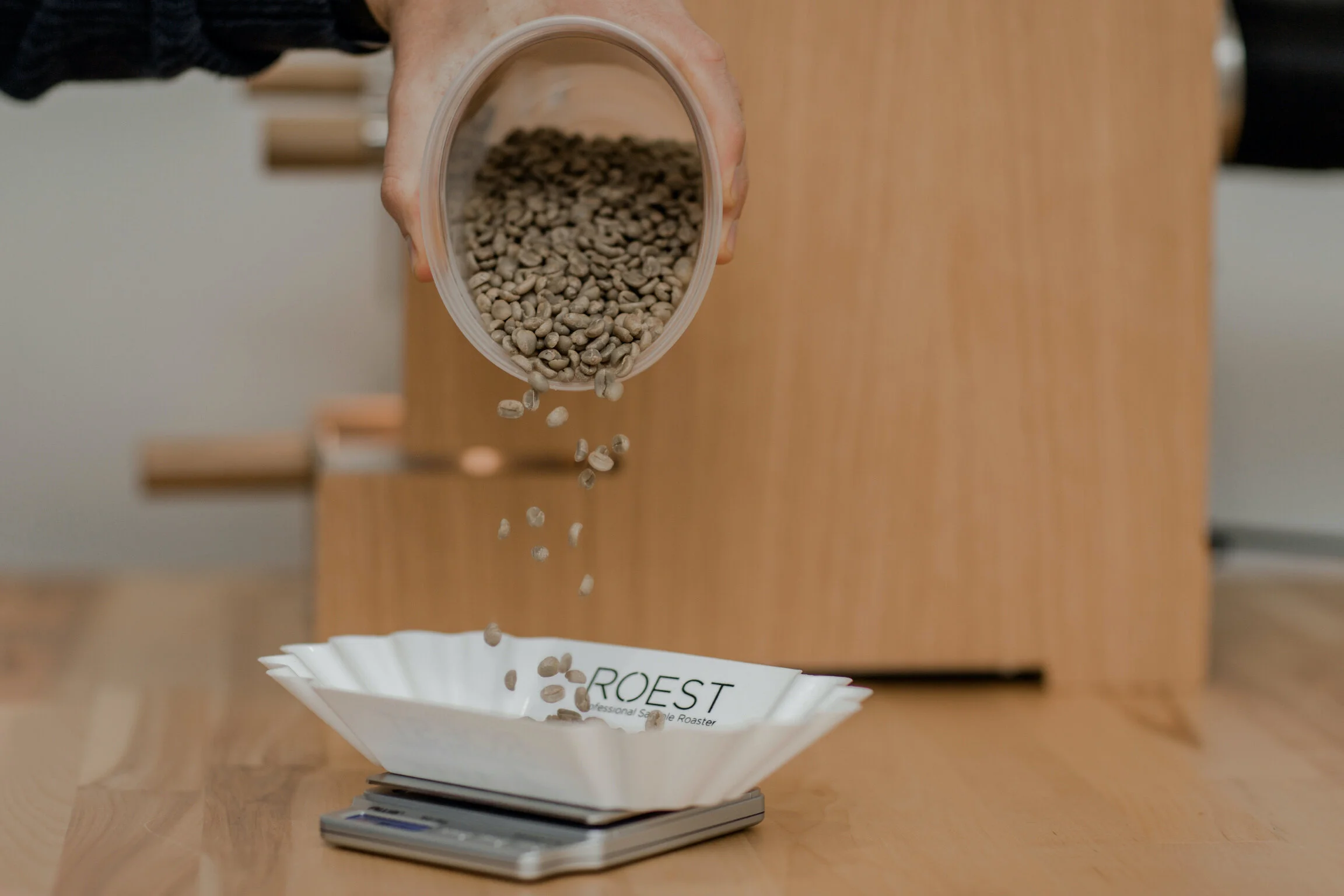Learning to ROEST with Long Miles Coffee Part1
For over a decade roasting technology has evolved significantly: new roasting technology, roasting techniques,… We are even able to share roasting profiles. David Stallings from Long Miles Coffee shares his roasting journey from gas roasters and spreadsheets to today’s technology that led him to “the most perfect small-scale machine yet“.
Over to David:
Long Miles Coffee is an East African Coffee producer with washing stations in Burundi. Photo credit Long Miles Coffee.
My name is David Stallings and I handle Roaster Relations for Long Miles Coffee. Long Miles is an East African coffee producer. We own two Washing Stations in Burundi, are currently in the process of building a third in that beautiful landlocked country, operate a washing station in Kirinyaga County on Mt. Kenya, and are getting ready to formally launch operations in Uganda.
Beginnings of roasting logs
I first learned to roast coffee in 2008. I recently came across some computer spreadsheets with profiles from those early days and, in truth, was pleasantly surprised by my early efforts in coffee roasting. Why were these notes in the form of spreadsheets? Because these were the days before the ubiquitous use of data logging software. A small handful of vanguard and more technologically advanced specialty roasters had developed their own software to automatically log roast data. The rest of us were left to do the best we could with notebooks, spreadsheets, and other forms of manual data logging. The spreadsheets I recently stumbled upon had temperature data points recorded every 30 seconds of the roast. From there I made graphs of the profiles in Microsoft Excel in order to have a visual representation of the roasts. My employer at the time thought I was a fool, saying that one only needed to look at the bean temperature every two minutes or so in order to produce consistent results.
“Learning to use the ROEST sample roaster has put a point on so many of the techniques and theories which I have developed and thought over as a coffee roaster this past decade-plus.”
Missing knowledge
Similar to how many baristas were trained in the earlier days of specialty coffee, roasting was taught to me in terms and technique that straddled the line between craft and science. While many would still argue that this is the case (I, myself, admit some partial truth to this sentiment), I believe that many of us see now, with better tools and techniques for evaluating and controlling roasts, that what we chalked up to craft previously, was really the inability to produce consistent roasts through lack of knowledge and nascent tools. In some ways, learning to use the ROEST sample roaster has put a point on so many of the techniques and theories which I have developed and thought over as a coffee roaster this past decade-plus.
David Stallings, responsible for Roaster Relations at LMC, is truly enjoying roasting on his ROEST sample roaster. Photo credit Long Miles Coffee.
The older the better - or not at all
Like many who have been in specialty coffee for a decade or more, I learned to roast on a traditional drum roaster. For the first chunk of my roasting career, fluid bed and/or hot air roasters were relegated to low-quality and/or smaller roasting operations. Nearly every up-and-coming roasting company that I knew around 2008-2010 was focused on obtaining or singing the praises of traditional drum roasters - the mindset in those days frequently being ‘the older the better.’ While many are still roasting on these machines (and in some cases to very good effect), the rise of fluid bed and/or hybrid hot air/drum machines has been undeniable. This is especially true for roasters looking to perfect very light and yet fully-developed roast profiles.
I feel fortunate to have had an education and roasting evolution that has spanned a number of machines and machine-types. The evolution of my roasting knowledge has not been linear, starting with traditional drum roasters and moving to fluid bed/ hybrid hot air/ drum machines. Different machine types have informed each other and the knowledge I have garnered on one machine has been applicable to others and vice versa. The ROEST sample roaster may be the most perfect small-scale machine yet designed to explore the many different aspects of coffee roasting that I learned about through various different roasting systems. The capability to develop profiles based on different parameters and the machine’s ability to develop coffee remarkably evenly, coupled with its ease of use and maintenance, make it an essential tool in my professional life.
Sample of Natural coffee by Long Miles Coffee from Heza hills. Photo: Long Miles Coffee.
In 2020 Long Miles Coffee started to roast their samples on ROEST sample roaster. Photo: Long Miles Coffee.
Profile Development
With any new machine there is always a period during which one needs to find their footing, so to speak. I have even found this to be true when roasting on different machines of identical make and model. This is true for any number of reasons:
stack height
proximity of tall buildings to stacks that may cause negative or positive pressure in the stack
probe type
probe age (and cleanliness)
exact probe placement
gas pressure and consistency, etc.
As such, I never expect my initial roasts to be particularly fruitful. That said, I do expect them to tell me much about the machine.
Interested in Profile Development? Read on our blog: Developing roast profiles with Matt Winton.
ease of learning through SAMPLE ROASTER
One aspect of technology’s increasing influence in coffee that I am particularly excited about is roast profile sharing. Though there are obvious implications for this feature that I can and will touch on later, I also greatly appreciate the effect this has when it comes to flattening the learning curve associated with a new machine. By knowing how others (including the manufacturer themselves) like to utilize the piece of equipment, I am -firstly- given a rapid glimpse into the norms and standards for the equipment and -secondly, and more importantly- I am able to greatly shorten the aforementioned period of finding my footing.
Upon getting the ROEST sample roaster up and running for the first time, I decided to run a few profiles that were readily available to me. Among these were roasting profiles designed by the team at Roest, profiles designed by Tim Wendelboe, and profiles designed by the team at Nordic Approach. Having names I trust and respect back not only the sample roaster I was about to roast on, but even the profiles I was about to run made for a welcome level of faith in the process.





